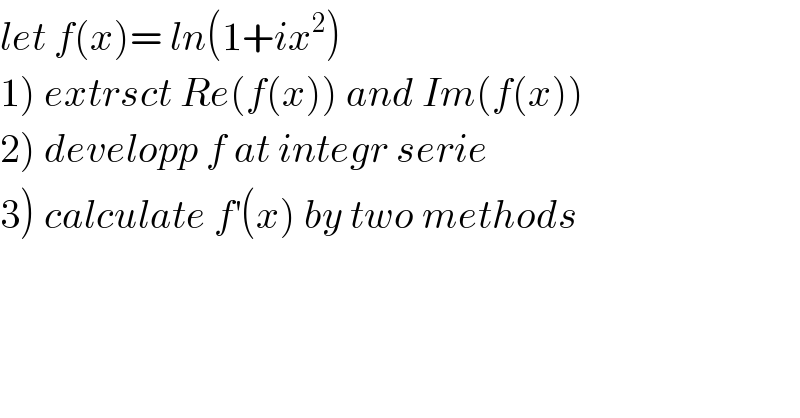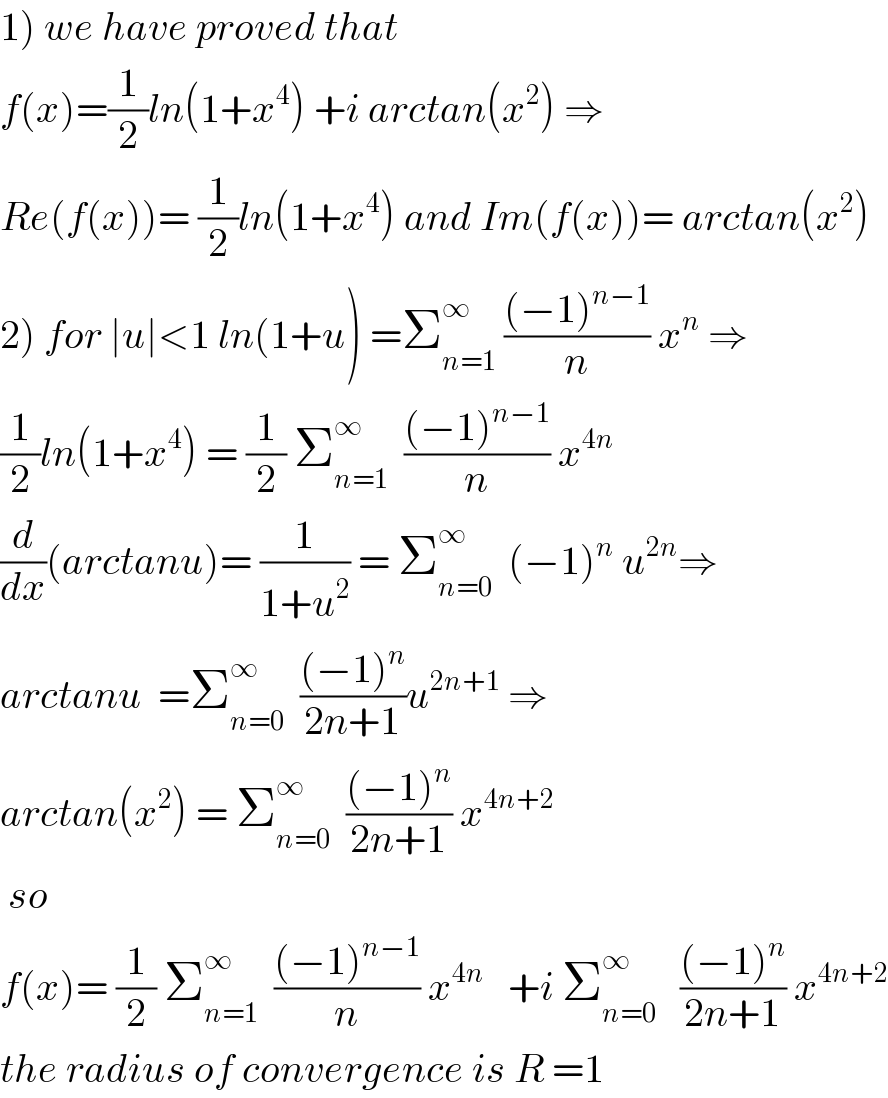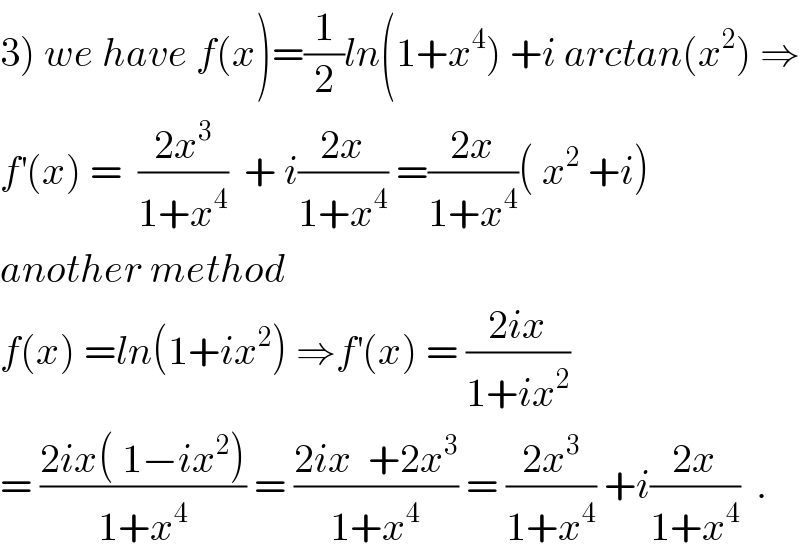
Question and Answers Forum
Previous in Relation and Functions Next in Relation and Functions
Question Number 34770 by abdo mathsup 649 cc last updated on 10/May/18

Commented by abdo mathsup 649 cc last updated on 13/May/18

Commented by abdo mathsup 649 cc last updated on 13/May/18

Answered by tanmay.chaudhury50@gmail.com last updated on 11/May/18

Commented by tanmay.chaudhury50@gmail.com last updated on 11/May/18

Commented by tanmay.chaudhury50@gmail.com last updated on 11/May/18

